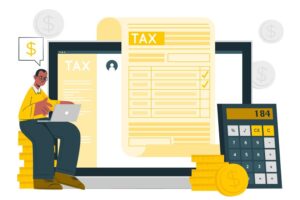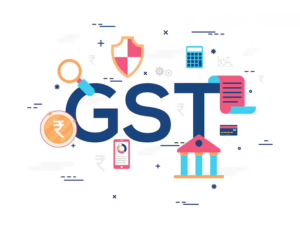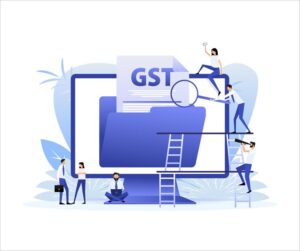Input Tax Credit (ITC) Under GST
- 31 Aug 24
- 11 mins
Input Tax Credit (ITC) Under GST
- What Do You Mean by an Input Tax Credit?
- Different Types of Input Tax Credits
- Who Is Eligible to Claim ITC?
- What Items Qualify for ITC?
- What Is the Procedure to Claim ITC?
- Time Limit to Claim an Input Tax Credit Under GST
- Reversal of Input Tax Credit
- ITC Reconciliation
- Documents Required for Claiming ITC
- What Are Some Special Cases of ITC?
- Items on Which ITC Is Not Allowed
- Conclusion
Key Takeaways
- Understanding ITC: Input Tax Credit (ITC) allows businesses to reduce tax liability by claiming credit for GST paid on purchases.
- Eligibility: Registered taxpayers can claim ITC on goods and services used for business activities, provided specific conditions are met.
- Types of ITC: ITC can be claimed on various inputs including imported goods, capital goods, raw materials, input services, and under the Reverse Charge Mechanism (RCM).
- Claiming Process: To claim ITC, taxpayers must file GSTR-3B, review GSTR-2B, address discrepancies, and ensure timely payments to suppliers.
- Reversal and Restrictions: ITC must be reversed for unpaid invoices over 180 days, mixed-use of inputs, and certain restricted goods and services.
Since the introduction of GST, input tax credit (ITC) has become a crucial topic of discussion. ITC is fundamental to the GST framework. A major advantage of GST is the uninterrupted flow of input credit along the entire supply chain from the production of goods to the end consumer, and across state borders, which was not possible before.
In the GST regime, every registered taxpayer can claim ITC on all inputs used or intended for business activities, encompassing both goods and services. To explore more about ITC under GST, continue reading.
What Do You Mean by an Input Tax Credit?

An input tax credit refers to the tax paid by a buyer on the purchase of goods or services. This tax, when deducted from the liability payable on outward supplies, is termed an input tax credit. Essentially, businesses can lessen their tax dues by claiming credit for the GST rate paid on their purchases.
Suppose you buy materials worth ₹1,000 for your business, and the tax rate on these purchases is ₹180. The tax payable on the goods you sell is ₹300 and the tax rate on goods you purchase is ₹180. You can claim an input credit of ₹180, meaning you only need to pay ₹120 in taxes to the government.
Different Types of Input Tax Credits
The following mentions the different types of input tax credits under GST:
Input Tax Credit on Integrated Goods and Services Tax (IGST) for Imported Goods:
When businesses bring in goods from abroad, they pay Integrated Goods and Services Tax (IGST) at customs. They can later claim ITC for the IGST paid on such imported goods.
Input Tax Credit on Capital Goods:
A GST-registered business is allowed to recover the input tax credit for capital goods acquired from a registered supplier where the capital goods are used for making taxable supplies. Examples of such capital goods include essential business inputs like machinery, equipment, and office furniture.
Input Tax Credit on Inputs (Raw Materials):
Any business person can also claim ITC for the raw materials that they use in their production or for the services that they offer. This comprises products like chemicals, metals, woods, and other raw materials that are used in the production of goods or the provision of services. For example, if you buy raw materials with 5% GST, you are entitled to a GST input tax credit.
Input Tax Credit on Input Services:
Any GST-registered business entity is entitled to take credit on the GST charged on services availed for further supply of goods or services. Services that can claim the input tax credit include accounting services, legal services, transportation and warehousing, telecom, and banking and insurance services.
Input Tax Credit on Reverse Charge Mechanism (RCM):
Under RCM, the recipient of the goods or services pays the tax directly rather than the supplier. Businesses can claim ITC on such reverse charge transactions.
Who Is Eligible to Claim ITC?
Any registered person can claim input tax credit under GST, provided they meet specific conditions:
- They possess a valid tax invoice or specified tax-paying document to claim the credit.
- The individual can avail the credit only after receiving the goods or services, even in scenarios where the billing and shipping addresses differ.
- The tax amount must have been paid by the supplier for the credit to be eligible for the recipient.
- The registered person should have furnished the necessary GST returns to claim the input tax credit.
- If you receive inputs in lots, you can claim the credit after receiving the final lot of inputs.
- The recipient must pay the supplier the value of goods or services along with the tax within 180 days from the invoice date. Failure to do so will add the credit amount to the recipient's output tax liability with interest. However, after completing the payment the recipient can claim the credit again. In cases of part payment, proportionate credit will be applicable.
Until the end of December 2021, regular taxpayers were allowed to claim provisional ITC in GSTR-3B, up to 5% of the ITC available in GSTR-2B along with the ITC claimed in GSTR-2B. However, taxpayers can now no longer claim this 5% provisional ITC under CGST Rule 36(4). It is essential for taxpayers to ensure that every input tax credit value they claim accurately corresponds with what is present in GSTR-2B.
What Items Qualify for ITC?
You can claim ITC only for goods or services used for business purposes. You cannot claim ITC for items used exclusively for personal use, exempt supplies, or taxable supplies for which ITC is specifically restricted.
What Is the Procedure to Claim ITC?

To claim input tax credit under GST, follow these steps:
Step 1: File your monthly returns using form GSTR-3B to report your output tax liability and input tax credit details.
Step 2: Review the input tax credit details provided in form GSTR-2B, which is automatically generated based on your suppliers' filed GST returns.
Step 3: Address any discrepancies found between your claimed input tax credit and form GSTR-2B, and correct them in the subsequent month's return.
Step 4: Ensure any excess input tax credit claimed is paid back, including any applicable interest and penalties.
Claiming ITC helps reduce tax burdens on businesses and ensures a smooth flow of credit within the GST system. Following these procedures allows businesses to benefit from GST, improving cash flow and profitability.
Time Limit to Claim an Input Tax Credit Under GST
The time limit to claim input tax credit under GST is stipulated in Section 16(4) of the CGST Act, 2017. Effective from 1st October 2022, the revised provision states that input tax credit must be claimed by whichever comes earlier:
- The 30th of November following the end of the relevant financial year, or
- The date of filing the annual GST rate return using Form GSTR 9.
For example, for the financial year ending on 31 March 2024, you must claim ITC by 30 November 2024 or by filing the GSTR 9 Form, which must be done by 31 December 2024.
Reversal of Input Tax Credit
You must reverse ITC in the following situations:
- Unpaid Invoices Beyond 180 Days
If you do not pay tax invoices within 180 days of their issuance, you must reverse the claimed ITC.
- Credit Note from Seller to ISD (Input Service Distributor)
For ISD if a seller issues a credit note to the head office, you must adjust the ITC claimed on the original invoice accordingly.
- Mixed Use of Inputs
When you use inputs for both business and personal purposes, you must proportionately reverse the ITC attributable to personal use.
- Mixed Use of Capital Goods
If you use capital goods for both business and personal or exempt purposes, you must reverse the ITC accordingly.
- Insufficient ITC Reversal
After filing the annual return, if it is found that the ITC reversed for non-business or exempt purposes during the year is less than required, the shortfall must be added to the outward tax liability. Interest will be applicable on the additional amount.
It is important to note that you must include the details about the reversal of ITC in the GSTR-3B.
ITC Reconciliation
You must ensure the ITC you claim matches the details your supplier provides in their GST annual return. If there are any discrepancies, both you and your supplier will receive notifications after filing the GSTR-3B.
Documents Required for Claiming ITC
To claim a GST input tax credit, you need the following documents:
- An invoice provided by the supplier of goods or services
- A debit note issued by the supplier to the recipient, if applicable
- A bill of entry
- An invoice issued under specific circumstances, such as a bill of supply instead of a tax invoice if the amount is less than ₹200, or when reverse charge applies according to GST law
- An invoice or credit note issued by the Input Service Distributor (ISD) following GST invoice rules
- A bill of supply provided by the supplier of goods, services, or both
What Are Some Special Cases of ITC?
The following are different cases for which you can claim ITC:
ITC for Capital Goods
There is availability of input tax credit for capital goods under GST, but there are exceptions:
- You cannot claim ITC for capital goods used exclusively to produce exempted products.
- You cannot claim ITC for capital goods used solely for non-business purposes.
- ITC cannot be claimed if you have availed depreciation on the tax component of capital goods.
ITC on Job Work
Manufacturers may send goods to job workers for further processing instead of completing production themselves. In such cases, the main manufacturer can claim credit for the tax paid on the purchase of these goods. You can claim ITC in both scenarios:
- When goods are sent directly from the main manufacturing facility to the job worker
- When goods are sent from the supplier's location to the job worker
ITC Provided by Input Service Distributor (ISD)
The Input Service Distributor (ISD) is generally the head office but can also be a registered office or branch office of the registered person under GST. The ISD collects the input tax credit from all purchases made and allocates it to the various recipients (branches) under different categories like SGST/UTGST, CGST, IGST, or cess.
ITC on Transfer of Business
In cases of amalgamations, mergers, or business transfers, the available ITC with the transferor will be passed on to the transferee at the time of the business transfer.
Items on Which ITC Is Not Allowed

Although a person registered under GST can claim an input tax credit for most inputs, there are certain types of goods and services that are not eligible for an input tax credit claim. These are as follows:
- Beauty treatment, cosmetic and plastic surgery
- Health services and fitness centres
- Motor vehicles or conveyances
- Food, beverages and outdoor catering
- Life insurance and health insurance
- Works contract services
- Travel benefits for employees on vacation
- Home travel concessions
- Construction of immovable property
- Lost or stolen or damaged goods
- Non-resident taxable person
- Personal consumption
- Composition supply
Conclusion
An input tax credit is a critical element of GST. It allows taxpayers to offset the tax paid on inputs against the tax liability on outputs. By considering both input and output tax credits, taxpayers can calculate their GST payable and deduct the input tax from the output tax accordingly.
💡If you want to pay your GST with Credit Card, then download Pice Business Payment App. Pice is the one stop app for paying all your business expenses.



















